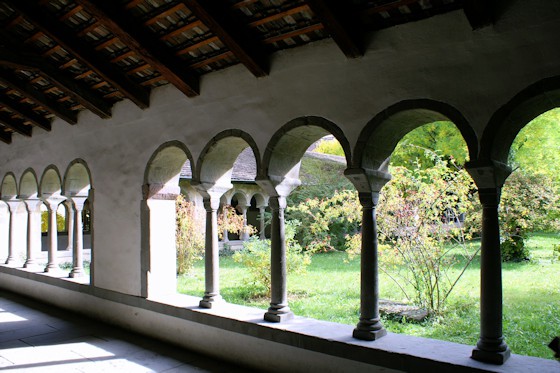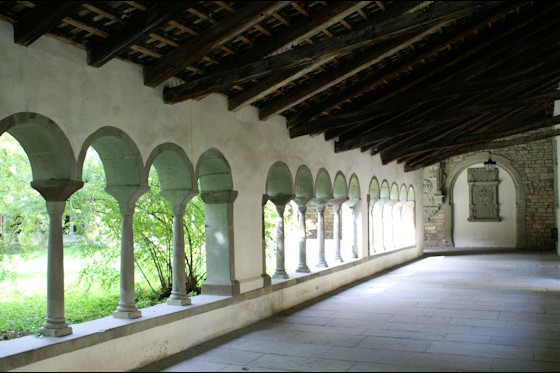Allerheiligen (All Saints) in Schaffhausen on the High Rhine was an important monastery in southwest Germany until it was abolished in 1529. It was founded in 1049 as a house monastery of the Nellenburgers and reformed by Wilhelm von Hirsau as early as 1080. The first monks came from the monastery on the nearby Lake Constance island of Reichenau, with which the founders had family ties.
1049: The Benedictine Monastery of All Saints in Schaffhausen was founded by Count Eberhard III of Nellenburg.
Approx. 1090-1105: Construction of the present cathedral in place of a smaller predecessor church. The three-nave, flat-roofed basilica with transept in Romanesque style corresponds to the Hirsau building school.
Around 1150: The bell tower is built.
The cathedral church has remained stylistically unchanged in its structure to this day.
![]() A view into the church, click on the photo to enlarge!
A view into the church, click on the photo to enlarge!
further interior views
The largest cloister in Switzerland is located here. It is partly Romanesque 12th century, partly Gothic 13th century and encloses the romantic, enchanting cloister garden, the so-called "Junkerfriedhof", where high Schaffhausen magistrates such as mayors, councillors, pastors and other deserving citizens were buried from 1582 - 1874.
More pictures of the cloister
View from the cloister to the church
Around 1100: The monastery buildings were almost completely rebuilt and enlarged. Further conversions and new buildings followed until the early 16th century
1524 Conversion of the monastery into a provostry. Use of the cathedral as a parish church.
1529 Dissolution of the monastery during the Reformation. Clearing out and partial destruction of the altars and church decorations. Use of the monastery buildings for secular purposes (administrative headquarters of the monastery nursing home, German boys' school, parish apartments).

The 4.5 tonne Schiller bell was cast in 1486 and rang until 1895 as the largest bell in All Saints' Minster. Friedrich Schiller used its inscription as the motto for his
famous poem "Das Lied von der Glocke".
Vivos voco, mortuos plango, fulgura frango / I call the living, lament the dead and break the lightning.
The Kreuzsaal

a gothic room
the refectory

In the church - front right - there is the carefully renovated gravestone with Count Eberhard von Nellenburg, his son Burkhard (left) and his wife Ita (right).
Photos: Gerhard Eichinger, October 2008











